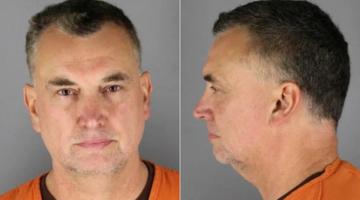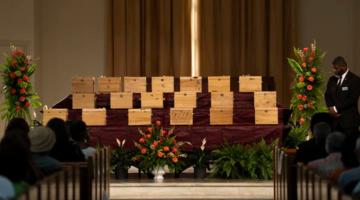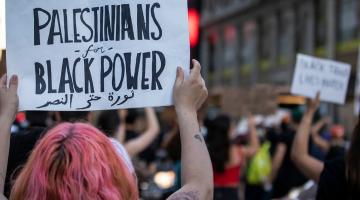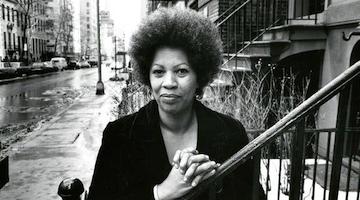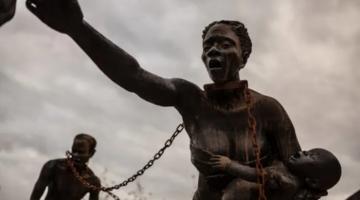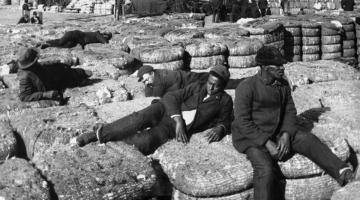The 1985 MOVE bombing by the Philadelphia Police shocked and devastated a city, leaving destruction that killed 11 people, including 5 children, leveled 61 homes, and rendered over 250 Philadelphians homeless. The bombing, occurring just two days after a shootout involving police, used an explosive device that included C-4 on homes that were known to be occupied by children. This escalated the mistrust of government and police by many of the city’s residents. Among those who were killed was John Africa, the founder of MOVE, a Black revolutionary, Korean War veteran, and native Philadelphian. Like its founder, the group was anti-government, anti-technology, and anti-capitalist. Neighbors had complained about noise and disruption by MOVE members. But the decision by a government agency to bomb MOVE over noise complaints raised many concerns. To some observers, the bombing gave credibility to the group’s fears about government overreach, particularly since the group has been outspoken about police brutality since its founding. These observations found affirmation elsewhere. A federal jury would find the city of Philadelphia and two of its officials liable for the bombing.
The memory of the bombing has not faded among Philadelphians, or African Americans generally, particularly since concerns around police brutality against Black Americans continue. As more than a few posts on social media noted, the conviction of former police officer Derek Chauvin for the murder of George Floyd was a small step toward accountability, but there are debates about whether it is enough of a step to be considered justice. Sixteen-year-old Ma’Kiah Bryant was shot and killed by police the same day Chauvin’s guilty verdicts were rendered.
But beyond the broader discussions of race and policing, another story broke about what happened to the five children who were killed by the MOVE bombing. The day after the Chauvin verdict, a report revealed that the remains of two of those children had been housed on a shelf in cardboard boxes in the collections of the Penn Museum at the University of Pennsylvania for decades, and the boxes were not in climate-controlled storage. The remains were given to researchers at Princeton University at some point, but the university now reports that they do not have them, and they do not know where they are.
The Penn Museum is no stranger to being under fire for its treatment of Black human remains. For over a century, it held the Samuel Morton Collection of Human Crania, a collection of skulls of enslaved Black people and Native Americans that Morton used for phrenology, a form of scientific racism that was used to draw links between race, skull shape, and intelligence. Morton’s research drew on Swedish botanist Carl Linneaus’s 1735 treatise Systema Naturae, in which Linneaus argued for four varieties of man, corresponding with Europe, America, Asia, and Africa. Linnaeus revised his treatise in the 1750s to include skin color, additional physical characteristics, geography, and moral traits. His work, and that of contemporaries like Immanuel Kant (German), David Hume (Scottish), and Morton, influenced the concepts of race in both the 18th and 19th centuries with frequently detrimental and dehumanizing effects on people of Indigenous, African, and Asian descent. Among other things, Morton’s “experiments” were used to justify Indian Removal in the 1830s and 1840s as well as being part of a broader pattern of non-consensual experimentation on Black people for medical purposes—experiments involving gynecology, inoculation for the protection of white enslavers, cancer research (see especially Henrietta Lacks), and syphilis (see the Tuskegee Experiment) are among the many areas where Black subjects were used without their consent.
Like most institutions that deal with human remains, the Penn Museum now has a publicly available policy that details its handling of human remains. That policy includes a line indicating that they have been compliant with local laws regarding public remains since 1990, five years after the MOVE bombing, and the same year as NAGPRA was enacted to protect Native American remains.
The Penn Museum received the MOVE remains because Philadelphia’s Office of the Medical Examiner gave them to physical anthropologist Alan Mann for analysis. To a Black community angry and grieving over the bombing, the fact that the Philadelphia Medical Examiner turned the remains of Black children over to an institution with a troubling history involving Black remains will not be a satisfactory answer. This has become even more urgent since activists have increasingly pushed for private and third-party autopsies after police shootings. What is less clear is what happened afterwards, and why the remains were not returned for burial thereafter, or if there are survivors who were able to claim them. Pennsylvania’s law for the handling of unclaimed dead, which was written in 1883, allows for the remains of those individuals to be donated to science. Some coroner’s offices seek out next-of-kin or place them in a communal grave. In the case of the child victims of the MOVE bombing, however, Tree and Delisha Africa have surviving mothers, and family. These were not unclaimed remains. Yet their remains stayed in the custody of Penn Museum, likely as a donation to science.
Although some of the details are murky, it appears that the remains were sent back to Penn Museum in 2016, and as of 2019, are featured as case studies in a Coursera course offered via Princeton University by former Alan Mann student, Janet Mungo on forensic anthropology, without the consent of living relatives. The Philadelphia Medical Examiner sent the children’s remains to Mann. The request was not made by the MOVE Commission that investigated the handling of the bombing, and the need for forensic analysis by Mann is a source of dispute. The Penn Museum allegedly returned Tree and Delisha Africa’s remains to Mann on April 17th, 3 days after they committed to the repatriation of the Samuel Morton Cranial Collection. Mann has not responded to media requests for comment. The repatriation commitment did not include the MOVE victim remains.
The Penn Museum’s Human Remains Policy states that it generally receives remains from other institutions, and it may have followed that protocol in allowing the MOVE remains to follow Mann to Princeton. But these policies, and adherence both to the policies and the letter of the laws in effect at the time, do not account for the dynamics of systemic racism either with respect to the specifics of the bombing, the broader discussions of anti-Black violence by police, or centuries of scientific racism. In this case, underaged children who were killed by police were used as science specimens without theirs or their families’ consents. The fact that the remains of two child victims of the bombing appear to have been lost has, understandably, provoked further anger.
[EDITOR’S NOTE: Additional editing was made after the publication of this essay to offer greater clarity on the timeline of events and more details on the handling of the remains of Tree and Delisha Africa.]
Jessica Parr
Jessica Parr teaches at Simmons College in Boston and is an Affiliate Assistant Professor of Women Studies at the University of New Hampshire, Durham. She's primarily interested in African American print culture, and religious and political thought. Her first book, Inventing George Whitefield: Race, Revivalism, and the Making of a Religious Icon, was published by the University Press of Mississippi in 2015. Follow her on Twitter @ProvAtlantic.



